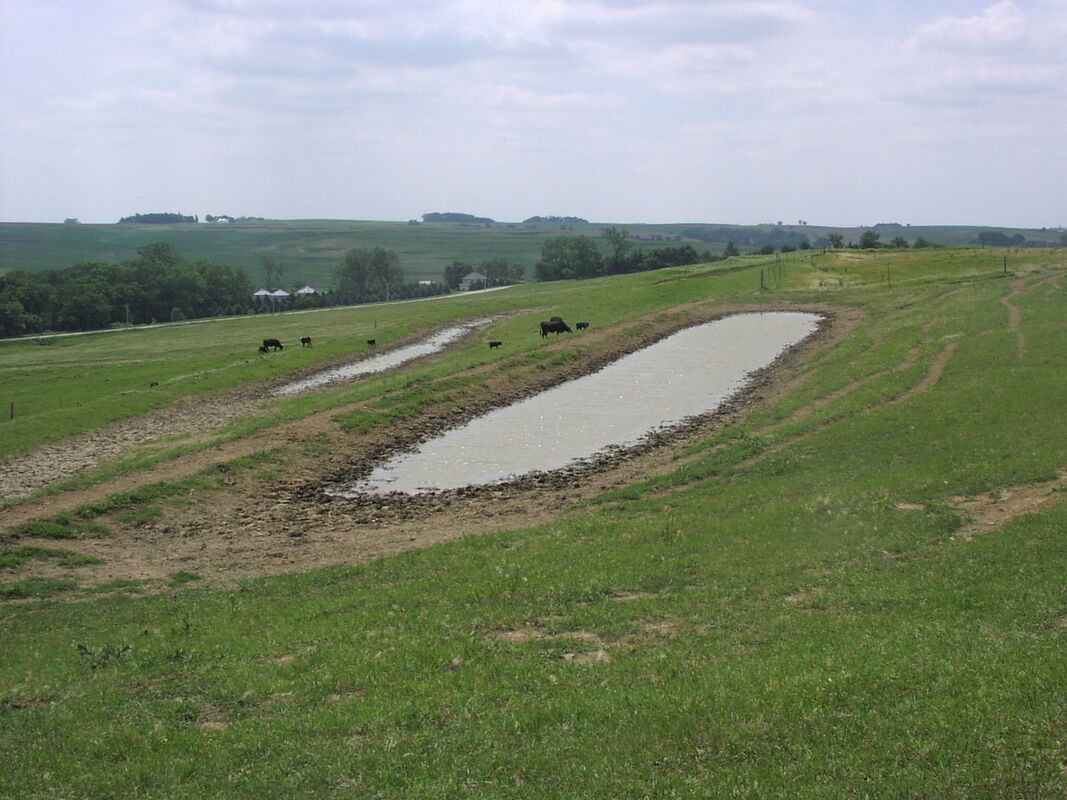|
As you drive one of western Iowa's scenic byways, you may be curious about the various modifications to the land that you see from the comfort of your car. If you grew up around agriculture, they might be familiar to you, however, if you are a city dweller you may be curious about the landscapes you encounter along the byways. The rolling hills along the Glacial Trail and Western Skies scenic byways, along with the rugged terrain of the Loess Hills National Scenic Byway, present various challenges to landowners as they seek to prevent soil erosion and improve water quality. Golden Hills RC&D is partnering with the USDA's Natural Resources Conservation Service on the Regional Conservation Partnership Program for the West Nishnabotna Water Quality and Infrastructure Partnership. The project will provide cost-share to landowners within the West Nishnabotna watershed to implement conservation practices that impact erosion and water quality issues. Below are short descriptions with photos of a variety of conservation practices that you can see while driving the Glacial Trail Scenic Byway, Loess Hills National Scenic Byway, or the Western Skies Scenic Byway. The RCPP program is designed to help landowners implement these conservation practices to improve water quality and prevent soil erosion. If you are a landowner within the West Nishnabotna watershed, consider attending one of several upcoming public information meetings about the program. Terraces
Prairie Strips
Research shows that by converting 10% of a crop-field to diverse, native perennial vegetation, farmers and landowners can reduce sediment movement off their field by 95 percent and total phosphorous and nitrogen lost through runoff by 90 and 85 percent, respectively. Prairie strips provide a win-win scenario for farmers and wildlife. (Source: What Are Prairie Strips? by Iowa State University) Grassed Waterways
The most common areas for grassed waterways are in draws between hills, and other low lying areas on slopes where water concentrates as it runs off a field. Grassed waterways may also be used to convey runoff from terraces, diversions, or other sources of water concentrations to a stable outlet. Cover Crops
Common cover crops used in Iowa include winter hardy plants like rye and wheat. Other less common, but also effective, cover crops include oats, spring wheat, hairy vetch, red clover, sweet clover, turnips, rapeseed, radishes and triticale. Water and Sediment Control Basins
0 Comments
Leave a Reply. |
Archives
June 2024
Categories
All
|
Address712 South Highway Street
P.O. Box 189 Oakland, IA 51560 |
ContactPhone: 712-482-3029
General inquiries: [email protected] Visit our Staff Page for email addresses and office hours. |



















 RSS Feed
RSS Feed